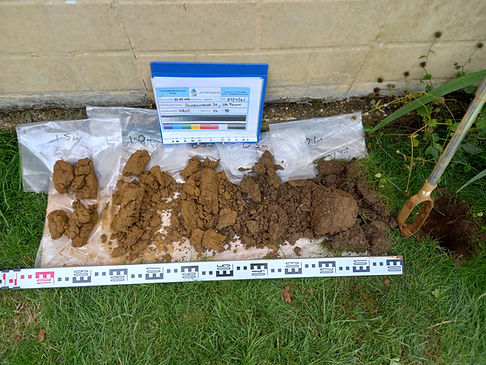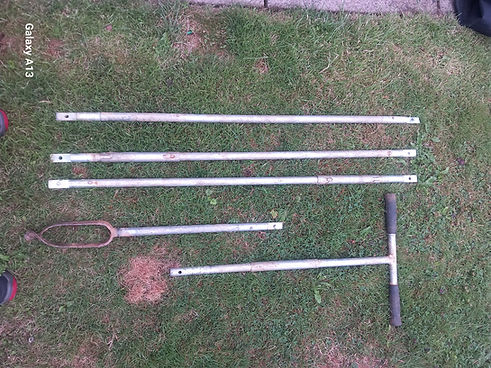Hand Auger Boreholes
Hand auger boreholes, also known as Dutch auger boreholes, are essential for obtaining shallow subsurface soil samples and assessing ground conditions. They are particularly useful in areas with limited access where larger equipment cannot reach.

Why do we undertake Hand Auger Boreholes
1. Site Investigation: Essential for preliminary geotechnical and environmental site assessments, as recommended by BS 5930:2015.
2. Soil Profiling: Provides detailed information about soil layers and conditions, crucial for accurate design and planning.
3. Sample Collection: Allows for the collection of undisturbed soil samples for laboratory analysis, ensuring reliable results.
4. Cost-Effective: More affordable compared to mechanical drilling methods, making it ideal for preliminary shallow soil investigations.
Hand (Dutch) Auger Borehole Process
Step 1: Site Selection and Preparation
• Identify Borehole Locations: Choose locations based on the site investigation plan, in consideration of relevant guidance including BS 5930, BS 1377 and BS 10175.
• Marking and Clearance: Clear and mark the chosen locations to avoid underground utilities and obstacles.
Step 2: Augering
• Assemble Equipment: Use a Dutch auger, extension rods, and a handle.
• Start Augering: Rotate the auger into the ground manually, periodically removing it to clear soil from the auger head.
• Depth and Diameter: Continue augering to the desired depth, typically up to 3 meters, with a borehole diameter of around 50-100 mm.
Step 3: Sample Collection
• Undisturbed Samples: Collect soil samples at various depths for laboratory testing, adhering to BS 1377 standards if required.
• Soil Logging: Record soil types, color, moisture content, and other relevant details in accordance with relevant guidance including BS 5930 and NHBC guidelines.
Benefits of Hand Auger Boreholes
Hand auger boreholes provide vital information for various projects. Here’s why they are important:
1. Accurate Soil Profiling: Helps in understanding soil characteristics and stratigraphy, crucial for design and construction.
2. Environmental Assessments: Identifies potential contamination and environmental risks.
3. Groundwater Assessment: Provides data on groundwater levels and potential issues related to dewatering.
4. Foundation Design: Informs foundation design decisions based on soil conditions.
5. Site Feasibility: Assesses site feasibility and suitability for proposed developments.
JAYSTONES have extensive experience in undertaking
Hand Auger Boreholes for both geoenvironmental and geotechnical investigations

